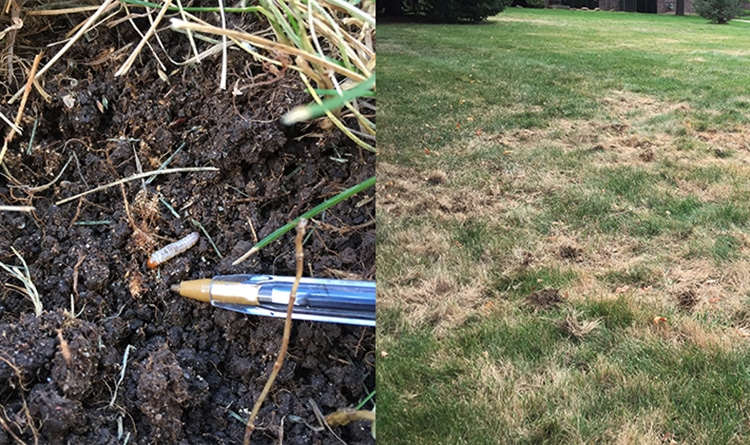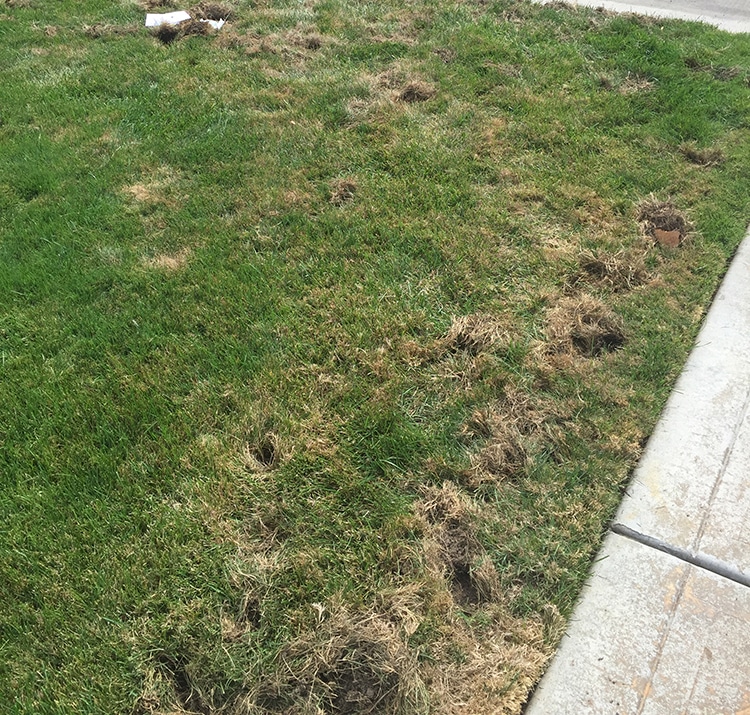
Lawns across Colorado suffered a difficult growing season in 2017 – drought stress, lawn mites, fungal diseases.
With the fall season upon us, and dormancy right around the corner, one might assume your lawn will experience smooth sailing for the remainder of the year. Not so fast.
September and October typically sees an influx of sod webworms, more commonly known as cranberry girdler and Japanese beetle grub.
In late June through early August, cranberry girdler moths emerge to lay their eggs. They differ from other sod webworm moths, who simply drop their eggs from the air, in that girdler moths actually land on the grass blades to lay their eggs – ensuring their vitality.
Unlike other sod webworms, cranberry girdler feeds on the grass roots rather than on the blades. This is perhaps the most damaging area to penetrate on a lawn, especially given how late we are in Colorado’s growing season.
Root systems simply may not have enough time or energy to recover before dormancy – a result not seen until early spring when parts of your lawn are not greening up.
Damaged areas of your lawn typically appear as round, brown areas about 1 to 3 feet in diameter – depending on the severity of the infestation. As with other grub damage, the grass is easily pulled back, and if you run your hands across the remaining blades, they will break off like straw.

A tell-tale sign that cranberry girdler is present on your property is a large population of birds congregating on your lawn feeding on the infestation.
A chemical treatment is most effective when applied a few weeks after heavy moth activity, when they begin to lay their eggs. However, fall treatments have been proven effective with a late infestation.
Like cranberry girdlers, Japanese beetles are also root feeders and can cause significant damage to your property in the fall.
The adult female beetle burrows into the soil laying up to 60 eggs at a time. In late summer, the eggs hatch into grubs, which begin feeding on the roots of your lawn well into the fall.
As the roots are consumed, small dead patches quickly merge into large areas of dead grass. Once the damage is evident, complete control of grubs is not possible and the damage will continue. However, a curative treatment is available in the fall to ensure a strong, healthy landscape come the spring.

In severe cases, skunks and raccoons are attracted to the grubs as a source of food, and will literally rip up your lawn in search of these tasty critters. As you can see from the photo, the damage can be quite substantial.
If you suspect you may have cranberry girdler or Japanese beetle grub on your lawn, contact Swingle today for a free lawn evaluation.